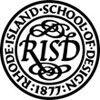Established in 2014, the School of Design (SoD) at Pratt Institute (Pratt) houses the Communications Design BFA and MFA programs; the Associate of Occupational Studies (AOS) in Graphic Design program; the Graphic Design/Illustration AAS; and a STEM-designated Packaging, Identities and Systems Design MS.
All SoD programs provide access to the Design studio—a creative space and community for collaboration and design exploration; access to hands-on, immersive maker spaces and production labs; internship opportunities at a field related professional site; and participation in more than 20 study abroad experiences such as faculty led summer excursions, fall and spring break travel, and custom semester programs. Tokyo, Florence, Copenhagen, London, Berlin, Glasgow, and Milan are just a few past destinations.
The Communications Design BFA at Pratt Institute has an emphasis in Graphic Design. Consisting of 126 credit hours, this interdisciplinary program features upper-level studio courses in areas such as branding, media and platforms, inclusivity, visual systems, interactivity, experience design, motion, and sustainability. All students will have opportunities to explore experimentation, creative coding, independent publishing, user experience, and design writing through electives.
Course examples for the program include Visualization/Representation; Light Color Design Studio; Process and Production; Typography and Information Design; Branding and Messaging; History of Graphic Design and Illustration; Graphic Design Intensive; 1-3; and Digital Prototyping. The Communication Design BFA at Pratt Institute culminates with the Professional Practice course and Graphic Design Senior Thesis Project.
The Graphic Design AOS and Graphic Design/Illustration AAS programs allow students to begin creating from day one as each option eliminates general education courses. Designed for high school graduates and adults with or without a degree, the AOS is an intensive, career-track program that features internship opportunities; courses led by industry professionals; and internships across industries at places such as Marvel Studios and The Painting Center.
Course examples for this 66 credit hour program include Graphic Design I-II; UI/UX Interactive Media I-II; Digital Design; Typography I-III; and Advertising Design I-II. In just two years, AOS students will graduate with a professional portfolio of their best work. Program alumni are prepared to pursue immediate employment in areas such as publishing, interactive media, advertising, package design, marketing, web design, illustration, brand design, and UI/UX design.
The AAS in Graphic Design/Illustration at Pratt Institute is a 64 credit hour program that prepares students for transfer into the Communications Design BFA, the Fine Arts Department at Pratt Institute, or any other related school or program at Pratt. The AAS combines advanced art and design coursework with liberal studies. Course examples include Drawing I-II; UI/UX Interactive Media; Pre-Press and Print Production; Illustration I-II; Digital Media; Communication Design I-II; and Themes in Art and Culture I-II.
The Communications Design MFA at Pratt Institute consists of 60 credit hours completed over two years. Taught by renowned professionals in the field, courses for the program include (but are not limited to) Graduate Studio: Visual Language A and B; Design Writing; Graduate Studio: Technology A and B; Origins of Contemporary Communication Design; Graduate Studio: Transformation Design A and B; and Cross-Disciplinary Studio.
Students in this graduate program will attend seminars, and complete a thesis project and exhibition across five courses. Graduates are prepared for academic careers, and leadership positions in areas such as print and digital media, data visualization, user experience design, identity systems and branding, environmental design, typography, information design, social media, design strategy, and interaction design.
First offered in 1966, the Packaging, Identities and Systems Design MS program at Pratt Institute consists of 48 credit hours, completed over two years. Course examples include Design Ethics and Practice; Packaging Design I-II; Origins of Contemporary Communication Design; Packaging and the Retail Space; Design Management; Prototyping and Production; Cross-Platform Design; and Sustainability and Design.
The Packaging, Identities and Systems Design MS program culminates with a Capstone Project that results in a professional body of work.
Graduates of the creative programs at Pratt Institute have been hired at major companies, studios, and organizations such as Apple, Google, Ogilvy, HBO, Penguin Random House, DreamWorks Animation, Hasbro, IBM, Warner Music Group, Peacock, Carhartt, Inc., Dior, RGA, Gensler, Memorial Sloan Kettering, NYC Department of Transportation, Perkins Eastman, Wolff-Olins, Partners & Partners (P&P), HOK Group, and 2x4.
Founded in 1887, Pratt Institute was one of the nation’s first colleges to welcome students without regard to color, gender, or class. With 1,200 dedicated faculty, the school serves approximately 5,140 students across campuses in Brooklyn, Manhattan, and Utica, New York. Around 48 programs are provided across six schools and The Center for Interdisciplinary Studies. Pratt Institute is accredited by the Middle States Commission on Higher Education (MSCHE).



























